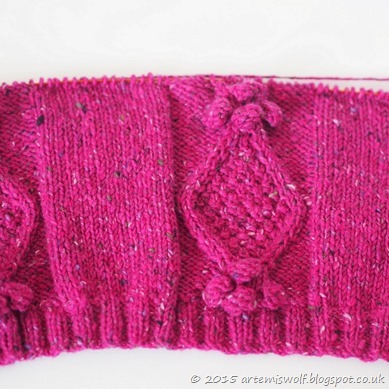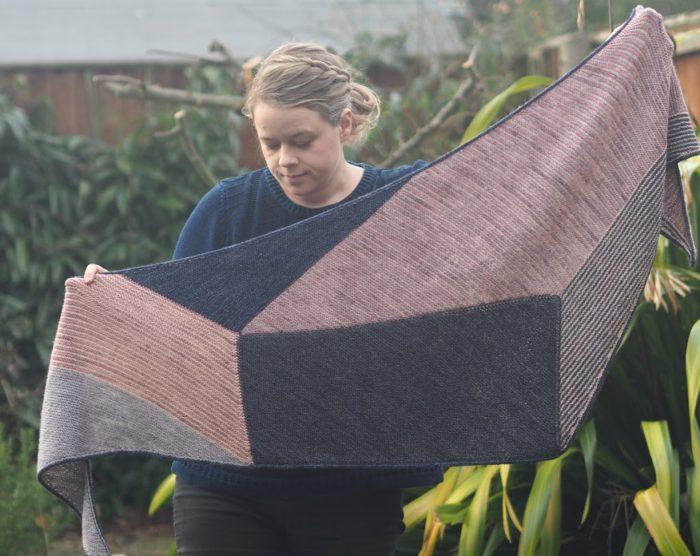When working ribbing, ever had that loose knit stitch before you change to purl? It’s a common problem. The reason it does it this is because the way a purl stitch is worked, it uses a little bit more yarn than a knit stitch and the excess moves into the last knit stitch and makes it loose. It’s the same reason why rowing out can happen for some – when you’re working stocking stitch and your purl rows look bigger than your knit rows. Rowing out doesn’t always happen, it’s often a combination of yarn fibre, tension and knitting technique.
There is a way around this and there are quite a few tutorials out there on how to fix this. I’ll show you how in a minute but the basic idea is that if you combination purl that first purl stitch after your knit stitch, it will tighten things up.
A normal purl involves wrapping the yarn anti-clockwise around the needle and a combination is wrapping the yarn clockwise. This uses less yarn though it does mean the stitch sits on the needle backwards, so you have to remember to work into the back of the stitch on the next row/round.
Tension does have an effect on whether you have a loose knit stitch in the first place. I find since I tend towards being a tight knitter then I don’t always have this issue, which is a bit of a problem when you try and do it intentionally for a tutorial!
The question I had about this technique is what do you do on the next row afterwards. Do you just work normally and work into the back of the stitch or do you repeat the technique or what happens if you work all the purl stitches this way?
I’d decided that when I worked in the round then it made sense to repeat the combination purl into the back of the stitch every row but what if I’m working back and forth. So what I did was repeated the same knitting swatch for each variation to see which one I preferred the look of. Just bear in mind this is what happens with my knitting technique and this particular yarn. You may want to repeat this for yourself and see which you prefer.
I found that when I was doing the cuffs of the Esquel poncho and I was working at a loose tension and the knit stitches were looking messy, so I used the large needles and that yarn to do my testing.
What I decided from this was the combination purl on the first purl on both the RS and WS rows was the neatest option (bottom left). The combination purl on all the stitches on both sides was pretty neat too but I found it opened up the first knit stitch of the column instead.
I found that working the combination purl every other row (whether on all the stitches or just the first one) made for a messy purl column.
So from now on I’m going to make sure I combination purl just on the first stitch but on both right side and wrong side rows. The winner….
So I’ll show how to do it now.
1. When you get to the first purl stitch after a knit stitch, insert the needle into the stitch as if to purl.
This is what you do the first time you do this – on all successive purl rows the stitch will be seated on the needle backwards, so insert the needle into the stitch as if to purl backwards (so from the back and left to right – sorry forgot to photograph that bit)
2. Wrap the yarn around the stitch clockwise (instead of anti-clockwise as for a normal purl) and work the stitch.
3. On the wrong side (WS), we want to mirror what we did on the right side. When you get to the last knit stitch before you change to purl, the stitch will be sitting backwards on the needle. The column of stitches on the reverse will open up with this technique but better on the wrong side than on the front of your work.
4. Insert your needle into the stitch as if you were going to knit into the back of the stitch.
5. Knit the stitch but wrap the yarn clockwise around the needle and work the stitch. This stitch just worked will be sitting backwards on the needle.
Just repeat this every time you come to this section in your knitting. The stitch will be sat backwards on the needle every time you come to it and hopefully remind you to knit or purl it by wrapping your yarn clockwise around the needle. If you forget to do it then pop a stitch marker in to remind you.
I’m working on this lovely pink aran coat at the moment and the technique is working well to make the transition from knit to purl neat and tidy.











